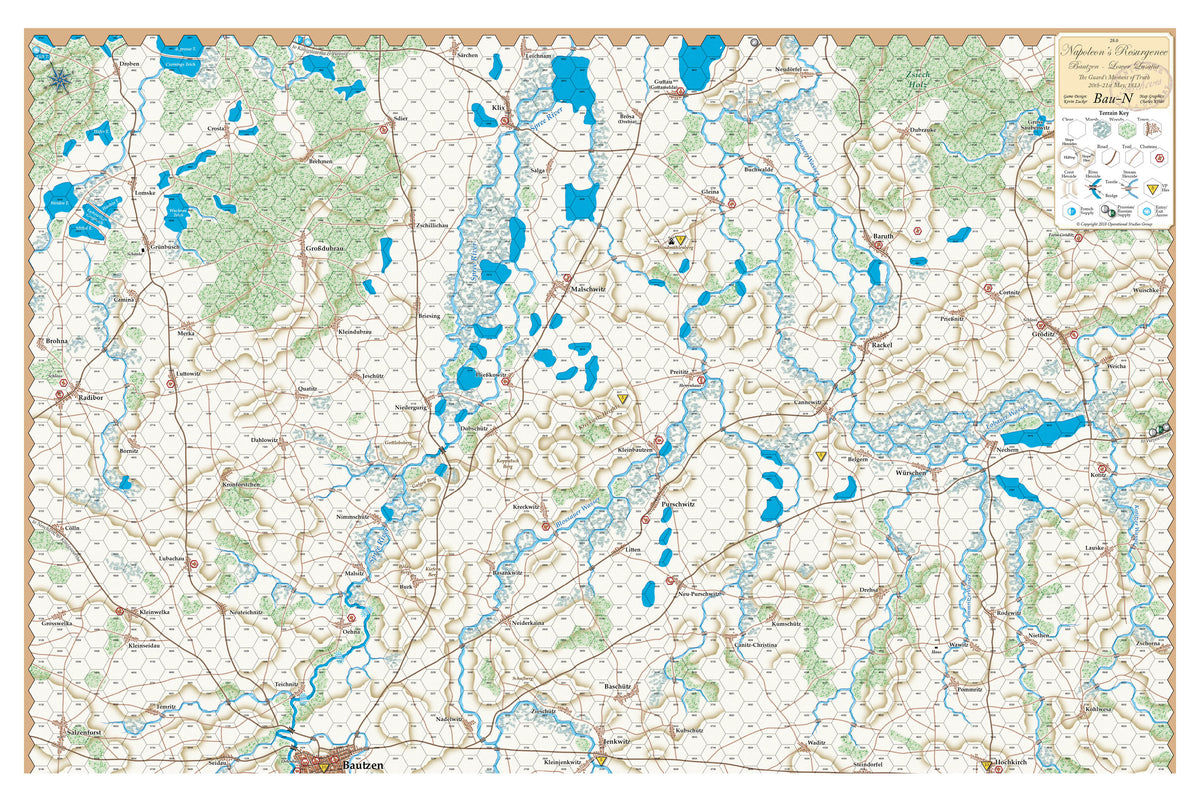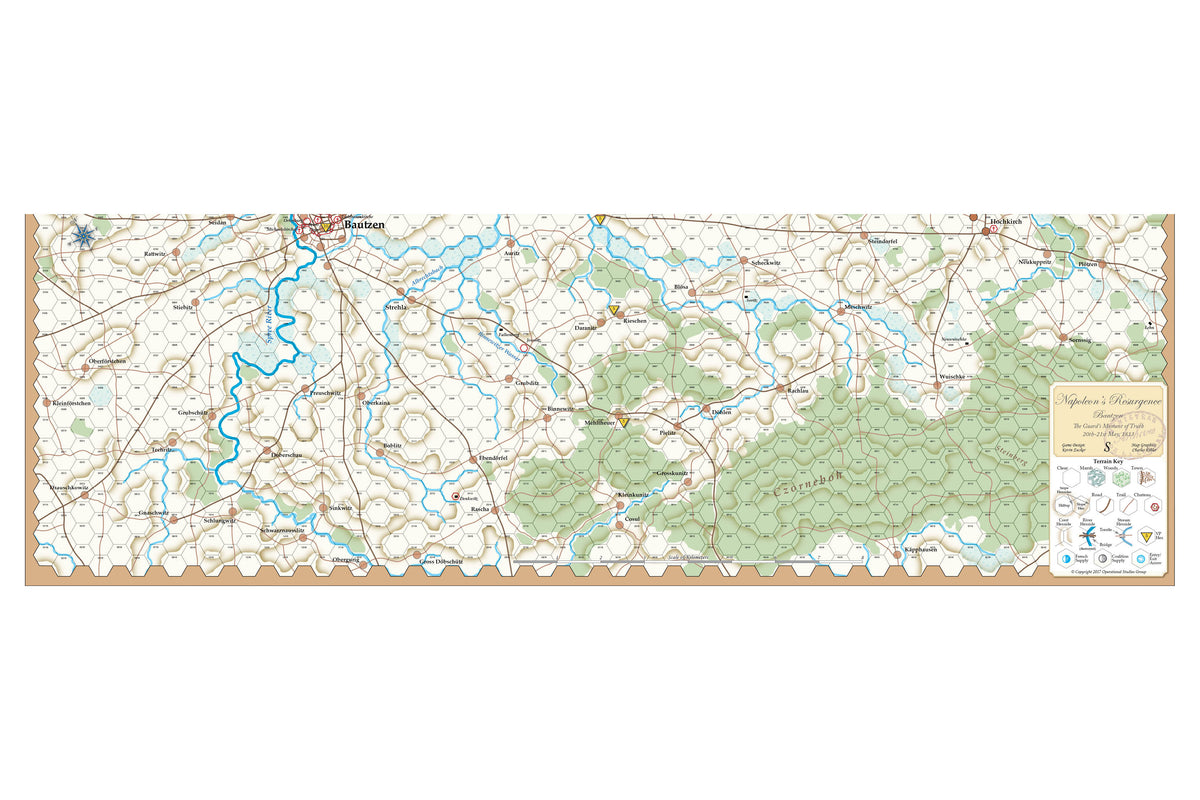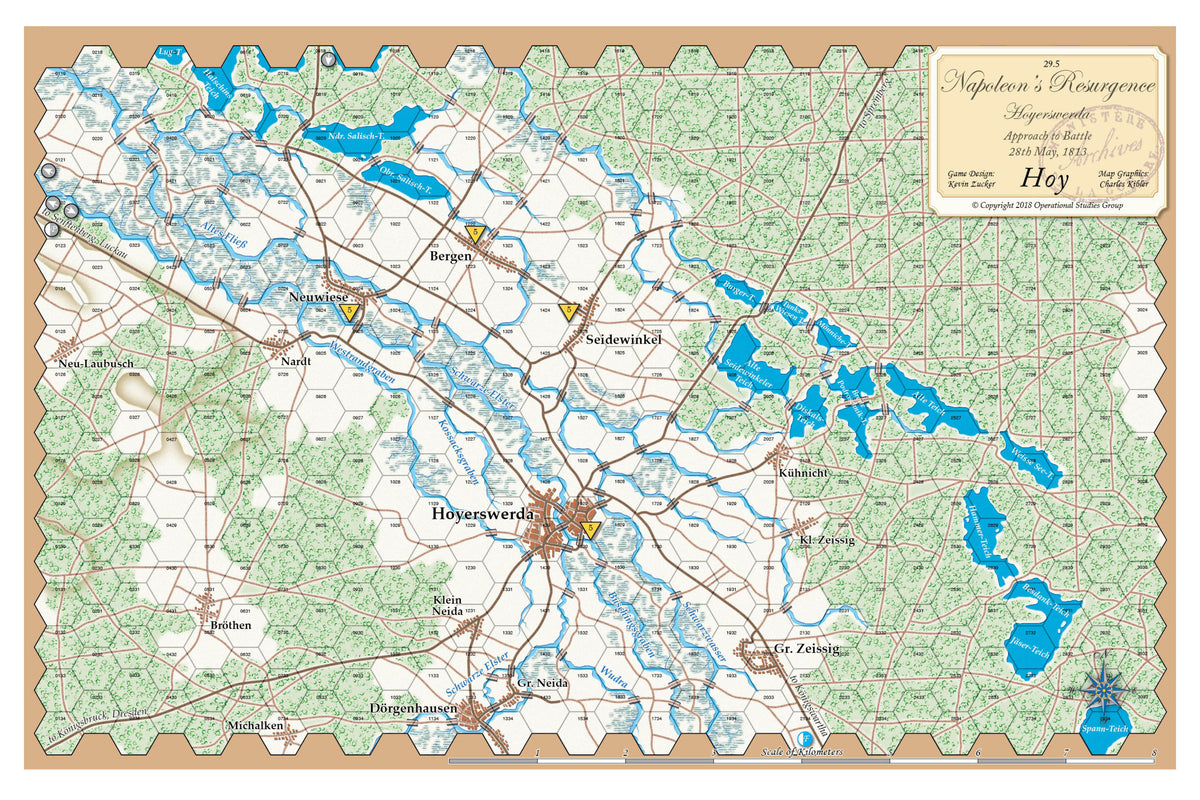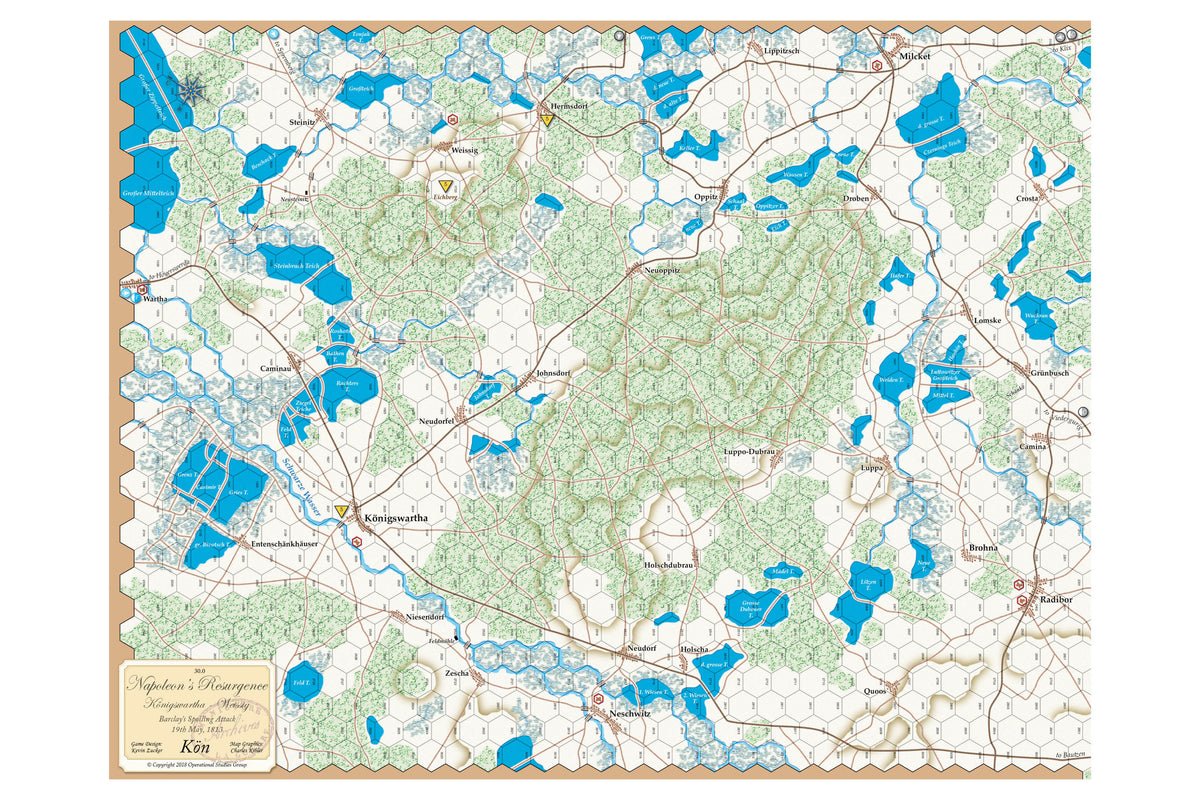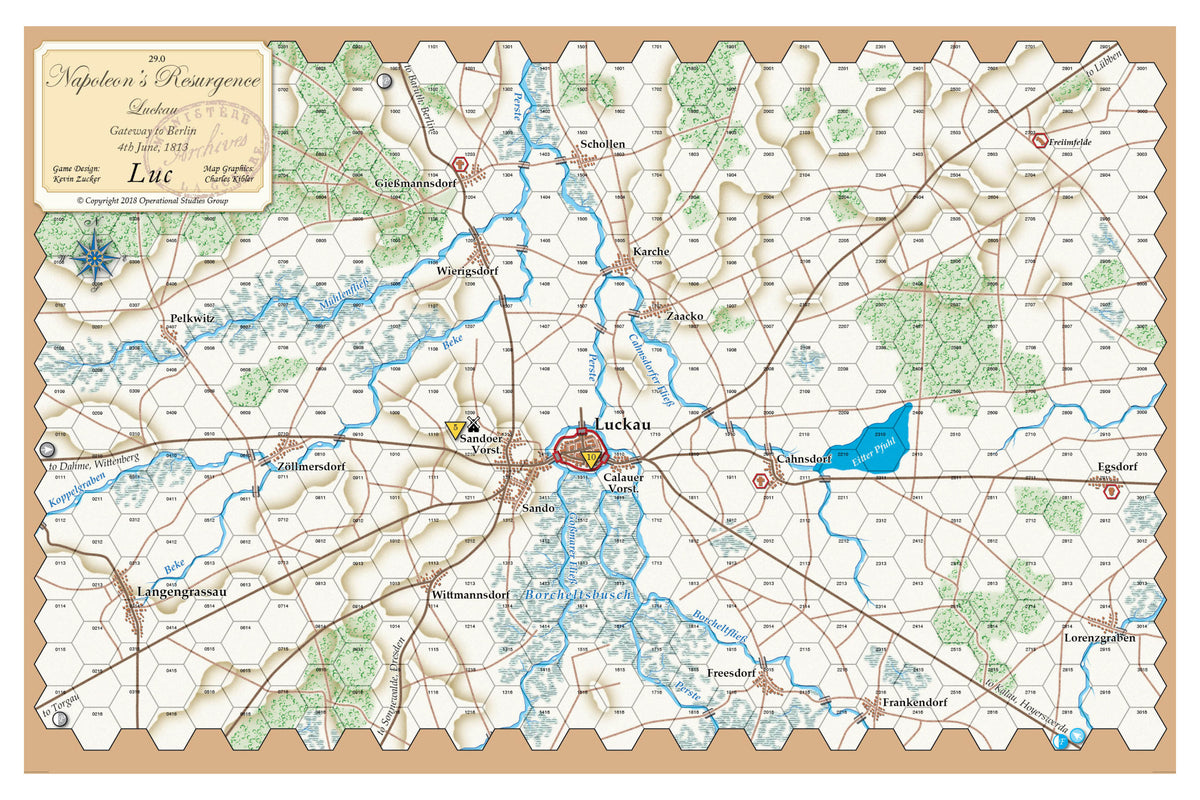
Napoleon's Resurgence
Battles Simulated
Lützen, Struggle for the four villages, 2 May
With the death of Marshal Kutusov on 28 April, there was no further obstacle to the Tsar’s fervent dream of dictating peace from the Tuilleries. The Allies marched boldly across the Elbe, not knowing Napoleon’s plans, his strength, or his location. They took up a position astride the road to Leipzig, the Emperor’s presumed objective. After a string of actions at Halle, Merseberg and Weissenfels, the two armies met on the field of battle at Lützen on the 2nd of May.


Bautzen, The Guard’s Moment of Truth, 20-21 May
The Russo-Prussian army was nearly 100,000-strong, but Napoleon outnumbered them, and Marshal Ney was approaching with 85,000 reinforcements. Napoleon had planned to pin down his enemies and then trap them with Ney's troops. But the Bravest of the Brave ended up coming in on the flank, not far enough to oblige Wittgenstein to redeploy, and so no deadly “hinge” was formed in the enemy line. The Russians were defeated, but Napoleon’s army was at the end of its tether, and the pursuit cost him more men than the enemy. The Bautzen map is one and one half map sections: 33x34”
Luckau, Gateway to Berlin, 6 June
Bülow’s Prussian Corps of 30,000 men marched south from Berlin, threatening French Communications with Dresden. Oudinot’s XII Corps and Beaumont’s cavalry were at Hoyers- werda on the 28th of May when some of Bülow’s force stumbled upon them. By the time Oudinot caught up with them again on June 6th Bülow had concentrated most of his Corps at Luckau, driving the French back with a loss of 2,000

Game Components
Napoleon's Resurgence, War of Liberation Part I
Each game includes:
Game Box
2 Maps 34"x22"
1 Map 17"x22"
1 Map 11"x34"
2 Maps 11"x17"
2 Counter Sheets (560 die-cut player pieces)
2 Booklets (System Rules and Study Folder)
17 Player Aid Cards (TRC x 6, Initial Setup x 6, Casualty x 2, Combat Results, Reorganization, and Weather)
5 Resource Cards (Adding the Cards, Combat Tables, Sequence of Play, Victory Worksheet, List of Cards Removed).
2 Card Decks (50 cards each)
Visit our Game Components section for details

Thursday Night Gamers
Napoleon's Resurgence
Watch the Thursday Night Gamers play Napoleon's Resurgence, Lutzen, Part I.
Game Maps
Napoleon's Resurgence
Each game includes six high quality maps (shown below): Two 22" x 34" maps, two 11"x17", one 17" x 22" map, and one 11" x 34" map. Three maps fit together to create an irregular playing area (44"x68") and covering an entire week of fighting.
Operational Studies Group (OSG) is a leader in the design and production of Napoleonic Wargames. Our maps are extensively researched, historically accurate, and printed on heavy cardstock in full color.

Player Resources
click PDF file to download
• Napoleon's Resurgence Update 23FEB22
• Napoleon's Resurgence Study 3.06
• BAUTZEN ATB - COALITION1 V1.04
• BAUTZEN ATB - COALITION2 V1.02
• BAUTZEN ATB - FRENCH1 V1.03
• BAUTZEN DOB - COALITION1 V1.04
• BAUTZEN DOB - COALITION2 V1.02
• BAUTZEN DOB - FRENCH1 V1.04
• BAUTZEN DOB - FRENCH2 V1.01
• BAUTZEN DOB-ATB-MINICAMPAIGN - FRENCH2 V1.01
• BAUTZEN MINI-CAMPAIGN - COALITION1 V1.03
• BAUTZEN MINI-CAMPAIGN - COALITION2 V1.01
• BAUTZEN MINI-CAMPAIGN - FRENCH1 V1.03
• HOYERSWERDA - FRENCH-COALITION V1.03
• KONIGSWARTHA DOB - FRENCH-COALITION1 V1.02
• LUCKAU - FRENCH-COALITION V1.03
• LUTZEN DOB - COALITION V1.02
• LUTZEN DOB - FRENCH V1.01
• LUTZEN MINI-CAMPAIGN - COALITION V1.06
• LUTZEN MINI-CAMPAIGN - FRENCH V1.01

